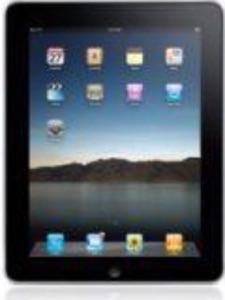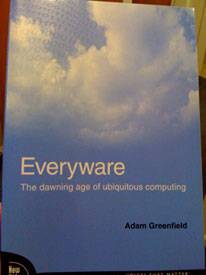In part 1 of our interview with Adam Greenfield, author of Everyware: The Dawning Age of Ubiquitous Computing, we discussed the impact of the iPhone and other smartphones on the Internet of Things.

In Part 2, we explore how the Apple iPad may also become a key device. Adam Greenfield thinks it may become the missing link between Internet-connected items in your home, for example the Internet fridge, and the Web.
In yesterday’s post, we talked about how Asian cities are ahead of the curve in deployment of Internet of Things technologies. One reason is that quality of life can be more easily be delivered as a service in a country like Korea, because its citizens are more open to futuristic appliances like the Internet fridge.
The counter-argument is that the Western market has never taken to the Internet fridge because of the poor utility of such appliances. The answer may be a device that acts as an effective intermediary between the fridge and the Internet. The iPad could be that device.

Adam Greenfield explained to me that the iPad may become the kind of device that people carry around with them everywhere inside the house, from the lounge to the bedroom to the kitchen.
That got me to thinking. Imagine this use case: you’re feeling peckish, so you wander into the kitchen for a snack. Your trusty iPad is tucked under your arm, as usual, and you place it on the kitchen bench while you open the fridge. You guiltily pick up a chocolate bar and you’re about to close the fridge door when your iPad beeps. You glance at the iPad, where a diet management iPad app has automagically opened and is flashing the message: “Hey buddy, you’ve already had too many calories today – put that back!” Blushing, you return the chocolate bar into the fridge and pick up a punnet of strawberries instead. You glance back at your iPad, which now displays a large green check mark on its screen!
There are many other scenarios I could describe, but the point is the iPad may well become a linking device between Internet-connected appliances and objects in your house, and the Web.
Adam Greenfield explained that the mistake we’ve made with Internet fridges in the past was to think of them like a dumb sensor. He remarked that it’s not the instrumentation that is important in an Internet fridge – it’s the network.

The data will probably be collected by the fridge, in time via RFID-enabled food packaging. But the fridge itself is a clumsy interface to that data. Early examples of Internet fridges have tried to be an interface for the consumer. Although some have had tablet-like devices that could be disconnected from the fridge and used on the kitchen bench, users have not found even those very compelling. There are a variety of reasons, including limited utility of fridge-tablets, poor user experience, and the sheer awkwardness of attaching a tablet to and from a fridge.
The iPad, however, will be used anywhere and everywhere by its users – inside and outside the house. So it’s a natural device to use to connect (virtually, not physically) to your fridge – along with other appliances and objects.
This isn’t restricted to inside the house either. We’ve written before about cars as a service. This is where you, the consumer, can effectively subscribe to a car or a car provider. This is already happening with the American service Zipcars. Greenfield noted that cars will become a “network resource” – addressable, scriptable, queryable, and so on. And once again, the iPad may be the device which connects you to cars and all of the data that is pumped out by cars and connected web services.
In the not too distant future, household appliances and other real-world objects such as cars will be connected to the Internet. The iPad may well become the connector to all of those things.










